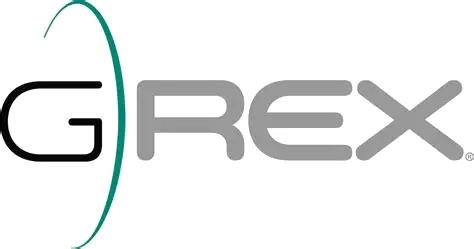| Criteria |

|
CliniMACS Prodigy®
Xuri®
Sefia®
IRO®
Cocoon®
ADVAX3®
AVATAR FOUNDRY®
Cell Shuttle®
|
|---|---|---|
Automatic delivery of nutrients & oxygen? |
Yes
Cells have unlimited access to nutrients and oxygen without need of any equipment.
|
No
Large, expensive, complicated, and custom equipment is required to provide cells with nutrients and oxygen.
|
Utilize standard incubators? |
Yes
G-Rex functions in standard incubators common to all cell culture labs.
|
No
Large, expensive, complicated, and custom equipment is required for pH and temperature control.
|
Space Efficient? |
Yes
Dozens of patients fit into one stackable incubator.
|
No
Large, expensive, complicated, and custom equipment is required for each patient.
|
Cost Efficient? |
Yes
Minimal investment in capital equipment.
|
No
Large, expensive, complicated, and custom equipment can cost over $300,000.
|
Linearly Scalable? |
Yes
Small-scale models expeditiously and cost-effectively validate clinical and commercial manufacturing processes.
|
No
Large, expensive, complicated, and custom equipment only functions at full scale thereby increasing the cost to validate clinical and commercial manufacturing processes.
|
Platform Technology? |
Yes
G-Rex devices are available in many formats (e.g. multiwell plates and bioreactors) and grades (e.g. RUO and GMP) and can be used as a technological foundation across the organization in all functions (e.g. R&D, PD, MSAT, etc.).
|
No
Large, expensive, complicated, and custom equipment is only available in one format and cannot be deployed as a technological foundation across the organization.
|
|
Simple Design Space?
?
What is a Design Space?
ICH Q8(R2) describes a design space as "the multidimensional combination and interaction of input variables (e.g., material attributes) and process parameters that have been demonstrated to provide assurance of quality." The simplicity of G-Rex eliminates many of the confounding variables inherent to systems that rely on mechanized nutrient and oxygen delivery (e.g. perfusion or dynamic culture) and enables a more focused understanding on the process parameters that truly provide assurance of quality. Moreover, design spaces can be established "for one or more unit operations" and can be "developed at any scale". Thus, a careful read of the ICH Q8(R2) on Pharmaceutical Development clearly shows simple, modular, and scalable systems can use "Design Space" as a tailwind to maximize operational flexibility. |
Yes
Unlimited nutrient & oxygen availability on demand, in the absence of mechanization, minimizes the multidimensional combination and interaction of input variables and process parameters needed to assure drug product quality.
|
No
Large, expensive, complicated, and custom equipment increases the multidimensional combination and interaction of input variables and process parameters needed to assure drug product quality.
|
High-throughput Capacity? |
Yes
Basic assembly line principles yield highest throughput capacity in smallest footprint, enabling efficient scale out of drug product manufacturing operations.
|
No
Large, expensive, complicated, and custom equipment limits throughput capacity.
|
Unlikely to Become Obsolete? |
Yes
Can incorporate new technologies & innovations without fundamental changes to the core manufacturing technology.
|
No
The interconnectedness of large, expensive, complicated, and custom equipment requires extensive re-engineering to incorporate new technologies & innovations.
|
Supply Chain? |
Safe
Minimal components mitigate supply chain interruption.
G-Rex is always in stock and available just-in-time (even during COVID).
|
Risky
Large, expensive, complicated, and custom equipment with many components increases the probability of supply chain interruption.
|
Financial Viability of Manufacturer? |
Yes
Wilson Wolf is a self-sustaining organization with diversified, reliable revenue streams, zero debt, no reliance on venture capital, and a strong balance sheet.
|
Yes
No
Except for Prodigy, Xuri, Sefia, and Cocoon, all other products are made and sold by companies entirely reliant on venture funding for continued operations.
|
Fully Closed? |
Yes
G-Rex bioreactors are validated closed systems and can share a common incubator.
|
Yes
Large, expensive, complicated, and custom equipment are validated as closed systems but cannot share a common incubator.
|
Eliminates use of BSC?
?
What is a Sub-Assembly? A sub-assembly is a unit assembled separately but designed to be incorporated with other units into a larger manufactured product. For example, combining basal media, human serum, cytokines, antibiotics, etc. into "complete media" is a form of sub-assembly. The sub-assembly in this case is the "complete media" which will eventually be incorporated into the full manufactured drug product |
No
Sub-assembly processes still require the use of the biosafety cabinet.
|
No
Sub-assembly processes still require the use of the biosafety cabinet.
|
Integrates all major unit operations? |
Yes
G-Rex can be used for enrichment, activation, transduction, expansion, and concentration in CAR/TCR manufacturing.
|
Yes
No
Prodigy is the only instrument that integrates all core unit operations in traditional CAR/TCR manufacturing.
|
Versatile across all CGT modalities? |
Yes
G-Rex is used to develop and manufacture therapies based on T cells (and all subtypes), NK cells, HSCs, TIL, etc.G-Rex devices are used in both autologous and allogeneic production.
|
No
Large, expensive, complicated, and custom equipment generally cannot be used across CGT modalities due to design constraints (e.g. inability to accommodate small starting populations or produce large product doses).
|
Used in commercial production? |
Yes
G-Rex bioreactors are used in multiple commercially approved therapies including CAR-T, TIL, and VST.G-Rex is a known entity at FDA, EMA, NMDA, and all regulatory bodies.
|
Yes
No
CliniMACS Prodigy and Xuri are the only large, expensive, complicated, and custom equipment used in commercial production.Sefia, Iro, Adva, Foundry, Cocoon, and Cell Shuttle have scarcely been adopted in early phase clinical trials.
|
Risk/Reward Profile |
High Reward
Low Risk
|
High Risk
Low Reward
|
